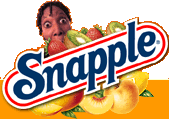
CCT 322

CCT 322 |
Marketing Information Products & Services |
| Section A | Section B | Section C | Section D | Section E |
Chapter 9

Brands Chapter 9
|
Brands and Branding
- review the powerpoint at www.witiger.com/powerpoints/MRK106/ select "chp9~MKTG106.ppt" it contains slides on branding that will be used when we discuss Chpt 10 in the Sommers text 10th ed.
- In modern era, makes it easier to identify all the products from a particular company - Makes shopping easier - helps the companies launching new products - from slide # 57 www.witiger.com/powerpoints/MRK106/ "chp9~MKTG106.ppt" |
| Chapter
10  |
Brand Association - the link to favourable images, celebrities, geographic regions ie. Red Strip - Jamaica, VW - Germany, Screech - NFLD Bailey’s - Eire Brand Preference /
Loyalty - the degree to which customers are committed to further purchases
eg. “choose the brand over other brands”
|
Chapter 10

Brand Equity |
Brand Equity - “… the value of a brand’s overall strength in the market …” - from slide # 59-63 www.witiger.com/powerpoints/MRK106/ "chp9~MKTG106.ppt" Sommers in his 10th ed p.
254
p. 255 says
As for Marketing
Information Products & Services, Sommers
explains on page 255
"Today,
creating brand equity is about more than positioning, packaging and imagery.
It involves developing a relationship with customers. Customers want brands
they can trust and be happy to tell other about"
|
Chapter 10

Brand Equity - responding to changes in the Competitive Environment |
Brand Equity
- responding to changes in the Competitive Environment
Weiss explains " In late 2000, IBM consolidated its server brands into a single eServer brand. That move represented a marketing response to a marketing problem. IBM is the revenue leader in the combined RISC-Intel server market, but it ranks third in Unix and Intel servers--the two primary growth categories. IBM comes up short in terms of brand equity compared to RISC competitors (Sun Microsystems and Hewlett-Packard) and Intel competitors (Compaq Computer and Dell Computer). The eServer program is intended to fix that problem by shifting emphasis from independent server brands toward a stronger overall IBM brand. The company has reorganized across server lines. Individual organizations no longer report to product-oriented executives. Rather, server development reports to a single executive, and server marketing reports to a single executive. " |
| Examples of companies trying to develop "product evangelism" by creating a community around the brand and other "especially innovative and exciting" situations | Beverage companies do not sell beer, ice tea and cola on the net, why do they have web sites and what do they use them for? |

 |
www.snapple.com
Snapple, in trying to compete against the Cola giants, Pepsi and Coke is trying to use their web site and other promotion to turn customers who are at the brand insistence stage into "evangelists". The point being not only will these people be faithful drinkers of the beverage line, but that they will be "fans" and encourage other people to drink the products. How do you facilitate their development of fan status - by giving them kewl screen savers, let them order merchandize with the logo, win prizes, enter contest etc. Snapple can also use the online site to gather specific name and address information of loyal customers which they will use in "direct mail" campaigns |


|
In April of 2000, Molson's
got much more reaction than it expected when it launched its TV commercial
"I Am Canadian".
The web site www.iam.ca on which the commercial is downloadable became, according to some accounts, the number #1 downloaded feature on the web for Canadian surfers in the spring of 2000. At the I AM website, people can get an email address such as joe@iam.ca or joe@onlycanadian.com or joe@canadianrocks.com The questionnaire which you
fill out to get the free email includes the statement
Such customer profiling techniques were done by the American cigarette companies in the 1980's in order to develop long-term brand insistence - however it was expensive to do that then due to the amount of free merchandize you had to give away - "kewl" web sites allow this customer profiling to be less costly and you can create communities of customers that in turn create a dynamic that can be very exciting. |
Chapter 10

Brand Strategy in marketing internet products |
Brand, Pricing
and the Internet
"The Internet and its promise of instant profitability is potentially the biggest problem in the coming years for many businesses in the retail and hospitality industries. Revenue managers want to use the Internet as a distribution channel to sell more product or in the case of hotels, put more heads in beds, yet at the same time an over reliance on the Internet could actually have the opposite affect, eroding already faltering profits. The fact is that by aggressively competing on features and price, it’s difficult for your business to create meaningful and lasting differences from your competitors. Your customers benefit from price wars by saving money, but also get confused when choice is confined to price. In many instances the customer is in effect buying a commodity and has no sense of brand loyalty because little is known about the company making the product or about service after the sale. As such, branding has never become more important, and its time your Internet pricing models need to be addressed. There is a danger of your product or hotel being perceived as a commodity. In the Internet world, if you can make your product different from a commodity you can get the pricing differentiation. Branding
should therefore be a key aspect of every business Web site, but
remember your brand is not just your logo, tagline, packaging or the "look
and feel" of your ads and your website. These are all graphical parts of
your brand identity and are often narrowly, and incorrectly, referred
to as "branding”. Your brand resides within the hearts and minds
of your customers and prospects. It is the sum total of their experiences
and perceptions of your product, company and service, some of which you
can influence, and some you cannot. "
|
Chapter 10

Brand Strategy in Different Regions |
Brand Strategy in Different Regions
|

Brand Strategy in Different Regions |
Brand Strategy in Different Regions read also http://economictimes.indiatimes.com/%3E/articleshow/408473.cms
Part of the interview
There are three big differences this time. Firstly, this time round it’s starting off with an adult mindset where people are looking at the Internet and digital media as part of marketing; rather than hoping for it to take over all and eliminate all other forms of marketing. Second, it’s starting off with a much larger base than five years ago. As per US statistics, 60 per cent of all households have access to the Internet, close to half of those have access to broadband Internet, and therefore, they also tend to use Internet 12-14 hours a week. The third difference is that people are beginning to realise that the future is going to be impacted by digital marketing. So for instance, there’s a lot of interest in personal video recorders (PVRs) like Tivo and Replay which are currently present in around 2.5 million homes in the US. But it’s all about how consumers control their television. So marketers are saying, if you want to learn how consumers are controlling media, then we should pay a lot of attention to the Internet, because that’s where they control media!" |
|
Brand Strategy in Different Regions  |
Brand Strategy in Different Regions http://economictimes.indiatimes.com/%3E/articleshow/408473.cms
Part of the interview " In which markets is the most innovative digital marketing happening? "The most sophisticated market when it comes to broadband and Internet penetration is South Korea. If you talk about digital gaming, ie households that have a Sony Playstation or Microsoft Xbox, then those tend to be in Japan and the US. When it comes down to telephone-based digital marketing, then it’s Scandinavian countries, some parts of Europe and Japan. When it come to digital music, then it’s the US and what we anticipate is that with digital TV, it will again be the US and the UK. We expect that with everything that’s built around broadband or the internet, India will catch up very fast. Even when it comes to digital music, India will catch up fast because it’s computer-based and connected to the internet, and digital video recorders will come in here in a big way. " |
Chapter 10

Brand Extension |
Brand Extension (AKA Product Diversification) A consequence of trying to extend the product lifecycle through Product Modification of Market Modification
|
Chapter 10

Trademarks |
This paragraph below comes from an article reprinted from Visual Arts Trends. The original author was By Craig J.J. Snyder and the original article was at http://www.icograda.com/web/feature-past-single.shtml?pfl=feature-single-2.param&op2.rf1=14 "A trademark is a word, combination of words, design, logo, or symbol that identifies to consumers the source of goods. That is, tangible goods or things that you can touch. A service mark is essentially the same thing as a trademark, but it identifies non-tangible services, for example, legal, accounting, and design. A trade name is the actual name of the provider of the goods and/or services. A mark is the word we lawyers use, mostly because we usually do not need to distinguish between trademarks and service marks. (R) is the symbol for a registered trademark or service mark. Under US and Canadian law, you may only use this symbol if you have a registration for the mark. TM is a symbol that is frequently used with marks to indicate that the owner believes the word, symbol, or phrase is a trademark. There is really no legal import to this symbol, but it is a useful deterrent. SM is same as TM, but it
is used with service marks. Few mark owners make this distinction because
relatively few people know what these terms mean. "
|
Chapter 10

Marketing Communications |
Marketing Communications
The Basic Promotion Objectives, according to traditional marketing, are
- moving downloadable colour pictures, sell a lot WTGR |
.Chapter 10
 |
Promotion
in conventional marketing terms means
|
| . | In
this course we will introduce a concept in the world of online marketing
which many might agree to, but few follow.
promotion
= communication
"To be successful in attracting traffic, using a good domain name and brand building, you need to be more effective at hearing what the customer wants." WTGR |
| As we discussed in the lecture
- Mass Selling, particularly paid advertising, has overwhelmed customers
offline and online [as noted below when we discuss Superbowl ads] and as
a consequence there is a greater drive for companies, [particularly online
companies competiting in a very competitive marketplace], to use direct
marketing techniques.
These techniques seek to obtain your mailing address and email address to send advertising material directly to you - however, as we discussed in class, there are problems with this that have to do with violations of privacy - of which we talk further about in the next section. |
Chapter 10

Marketing Communications p. 295 |
Marketing Communications
Mix
- the combination of
|
Chapter 10

Marketing Communications p. 299 |
Push - Pull Strategy |
.
|
|
CONTACTIMAIN PAGE I NEWS GALLERY IE-BIZ SHORTCUTS I INT'L BIZ SHORTCUTS IMKTG&BUSINESS I TEACHING SCHEDULE IMISTAKES ITEXTS USED IIMAGESIRANKI |
| . |